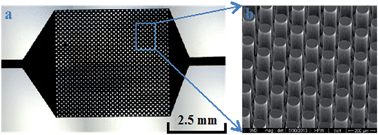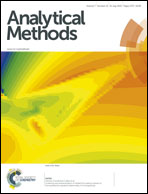A versatile probe for chemoselective capture and analysis of carbonyl compounds in exhaled breath
Abstract
We describe an aminooxy reagent for the capture of trace aldehyde and ketone volatile organic compounds (VOCs) in exhaled breath. The reagent, 4-(2-aminooxyethyl)-morpholin-4-ium chloride (AMAH), when coated onto micropillars within a silicon microreactor, chemoselectively and covalently retains carbonyl VOCs from exhaled breath. The AMAH–carbonyl adducts are then eluted from the microreactor with methanol and directly analyzed by Fourier transform-ion cyclotron resonance (FT-ICR) mass spectrometry (MS), where the aminium ion of the reagent enhances the sensitivity for high mass accuracy. We also outline a protocol for treatment of the AMAH–carbonyl adducts with poly(4-vinylpyridine) to afford the corresponding volatile carbonyl adducts that now can be analyzed by gas chromatography-mass spectrometry (GC-MS). This convenient protocol imparts flexibility for the identification and quantification of isomeric VOCs using both FT-ICR-MS and GC-MS. Representative breath analyses are given to illustrate this applicability of AMAH.


 Please wait while we load your content...
Please wait while we load your content...